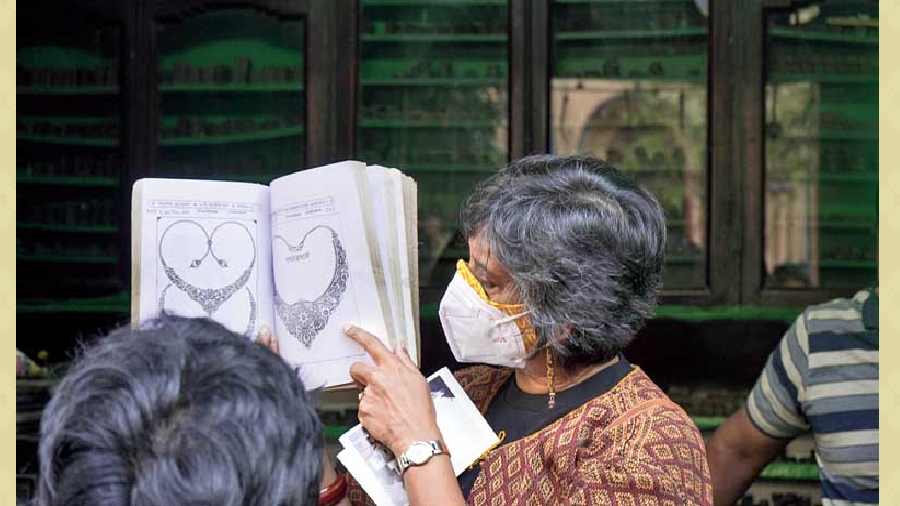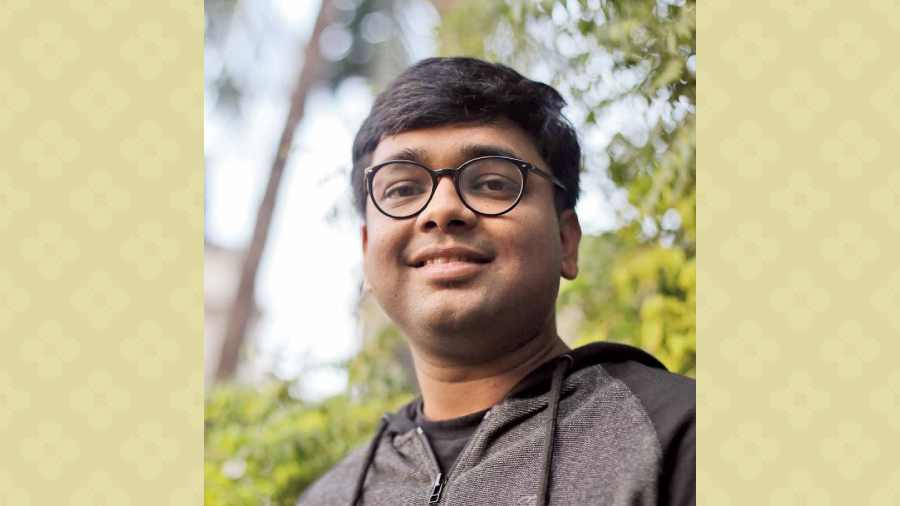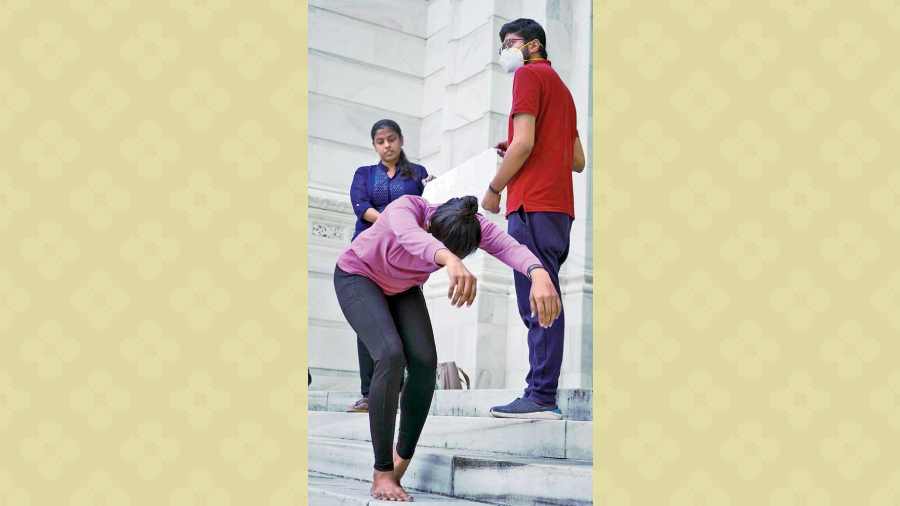Many of us have looked at Abanindranath Tagore’s paintings on the walls of museums and galleries but what would it feel like if you visited his garden house on the banks of the Hooghly at Konnagar and discovered that this is where Abanindranath first learnt how to draw huts native to Bengal? As part of DAG’s (erstwhile Delhi Art Gallery) museums initiative, their Calcutta chapter hosted ‘The City as a Museum’ recently, which is an art and heritage festival spread across some of the best loved landmarks and neighbourhoods both within and outside the city, to reconnect our rich legacy of Bengal art with various aspects of our history.

Srikanta Acharya performs Tagore’s songs and verses at Nihar on the Ganges
While discussions around heritage and art history often focus more on the past, DAG’s programme expanded the museum experience beyond its four walls, reminding us that these artistic traditions and practices continue to shape our present.
The week’s programme started with ‘River Tales and Tunes’. Shortly before sunset, participants boarded the river barge, Sumangal, ready to sail along the trail of the first European painters who visited India from the late 18th Century onward. Artists like William Hodges, Thomas Daniell, William Daniell and James Baillie Fraser were among the first to paint the city and its ghats’ many moods, and the conversation centred on their struggles to capture the mighty river in their works. The ferry’s departure from the jetty was timed to coincide with the sunset, and as the skyline darkened, the ghats came alive with a thousand specks of lights as devotees observing Kartik purnima set lamps afloat on the river water. During the return journey, the barge swayed to the rhythms of Whale in the Pond’s folk-inspired tunes.
The next stop was a hands-on workshop co-presented by Victoria Memorial Hall and Pickle Factory Dance Foundation. Early-career artists gathered at the Eastern Quadrangle of the memorial — whose iconic architecture defines the very skyline of the city. The workshop titled ‘Rethinking Spaces’ was facilitated by Vikram Iyenger and Sumona Chakravarty, who offered tools to conceive performances that respond to the colonial monument and lend new meanings to the space. The workshop began with an unexpected movement exercise — what if you stood in front of the monument and tried walking backwards, away from it? Does it change how awe-inspiring it appears? Vikram invited the participants to reflect on how to map the space using their bodies and move through it in unpredictable ways. This was followed by a verbal exercise by Chakravarty to tease out word associations with the monument eliciting responses like “grand”, “colossal”, “intimidating” and even “miniature”, which became the basis of the next visual mapping game. Some performers draped themselves around the giant doric pillars, while others climbed onto the building’s crevices. At the end of the workshop, participants presented their ideas for site-specific performances.

Tathagata Neogi of Immersive Trails introducing the Dalhousie Afterhours walk
The following morning DAG’s team landed up on the banks of the Hooghly in Panihati at the beautiful riverside garden-house, Nihar on the Ganges. Built sometime in the late 19th Century by Radhakanta Deb and currently run by entrepreneur Diyali Biswas’s family as an homestay, this venue held a day-long event titled ‘Tagores by the River with Srikanta Acharya’ — envisioned to explore the legacy of the Tagores on both sides of the Hooghly river and link it to artworks in DAG’s collection and beyond. As the 60-odd visitors gathered at Nihar, a fleet of totos whizzed them off to the erstwhile residence of Chhatu Babu, which had become a retreat for the Tagore family as they fled a deadly outbreak of dengue in the city. Reading out sections from Rabindranath Tagore’s memoir Jibansmriti brought the space alive, as the participants heard the poet describing the sublime beauty of a monsoon that he witnessed from the ghat of the house. A ferry ride away, the next stop was Abanindranath Tagore’s garden house located just on the opposite bank, in Konnagar. As the visitors made their way through the lush garden path and gathered around the steps of the ghat, they were treated to readings from Abanindranath’s memoir Jorasankor Dhare, describing the idyllic days of his childhood spent in various corners of the house and its vast garden. A mellow sunset greeted the visitors just about the time they made the journey back to Nihar, lit up to welcome Srikanta Acharya’s performance of a selection of Rabindranath’s poetry and songs against the backdrop of the river. Acharya commented: “In a city that often misses the opportunity to celebrate its riverfront, this was a rare opportunity to blend Rabindranath Tagore’s music and verses with the river’s ebb and flow.”

Paula Sengupta showing a jewellery design catalogue
Tracing the remains of our past in present practices took us to the narrow lanes of Chitpur. As a crowd gathered around Minerva Theatre, artist and art historian Paula Sengupta introduced the history of the indigenous print-making community that thrived in and around this area known popularly as Bat-tala (under the Banyan tree) from the early 19th Century onwards. The small crowd squeezed its way through the lanes lined by numerous jewellery shops, some printing presses and huge hoardings advertising the latest jatras (a folk theatre form surviving mainly in parts of rural Bengal) in town. Participants got a close-up view of the various processes of printing and designing, as they were shown the original engraving blocks, jewellers’ manuals and were even allowed to carefully handle the equipment used by the artisans there. At one stop, Sengupta took the crowd inside Maa Annapurna Printing Press in small groups to see one of the rare examples of a vintage printing press. The tour ended with a spirited attempt to navigate the ruins of a Radha Mandir held together by the very banyan tree believed to have lent its name to the area.
A walk through Metiabruz led by Shaikh Sohail of Breakfree Trails brought DAG’s 10-day celebration of art and heritage festival to a close. Starting in front of the now defunct Kamal Talkies, the ‘Lost Legacies’ trail wove its way in and out of imambaras and mosques that trace their origins to Wajid Ali Shah’s ‘Chhota Lucknow’. Alongside delving into the religious iconography visible at these sites and decoding architectural details, the walk also celebrated Calcutta’s food heritage, as participants stopped at Ramesh Saini’s paan shop to get a taste of the delicacy that had impressed the exiled Nawab himself.
The series was so inclusively designed that it offered something of interest for all kinds of enthusiasts. Having attended a number of these events, Gaurab Dasgupta remarked, “The concept of City As A Museum was a brilliantly conceived one. Each event was conceptualised with extremely well-informed guides. We couldn’t have asked more from DAG other than wishing that such events are organised more frequently.” What was truly remarkable about the vision of the Heritage Week was the unique nature of their collaborations — a mix of 12 institutions, performers, academics and unexpected venue partners. These partnerships have allowed people to access and experience famous heritage landmarks in ways not accessible to regular visitors of the city. For example, partnering with Victoria Memorial Hall has allowed an exclusive and rare access to the space as a site for interaction and performance. Reflecting on his experience Sarabjit Mitra remarked: “The walks provided glimpses to collections and spaces that are otherwise difficult to access. The tour of the Botanical Gardens and the celebrated Roxburgh collection of botanical illustrations for instance presented this two-century-old institution in a new light.” Collaborating with Immersive Trails afforded the unique opportunity to explore the history of the Dalhousie neighbourhood at night, as Tathagata Neogi highlighted curious architectural details of some of the most famous historical edifices of the Dalhousie neighbourhood. The grand halls of the Indian Museum became a space for making art as its painting galleries were opened up for an art workshop led by Swarup Dutta.
The overwhelming response from nearly 300 participants who joined over these 10 days demonstrated the importance of looking at museums, heritage spaces and artworks as inheritances that need to be kept alive through new engagements. What was inspiring about imagining the future of arts engagement was the sheer enthusiasm of some of the participants. Khushbu Jaiswal, who came for every event, recounts: “With mesmerising trips on the barge, soulful concerts, insightful workshops among others, Ghare Baire’s week-long celebration transformed my notions regarding art and heritage.”
The City As a Museum reanimated DAG’s collection of artworks by building their connection with multiple notions of heritage, allowing us to experience the past as something we can touch, feel and visually imagine unfolding in time.

The author is a project lead, research and development, Museums at DAG
